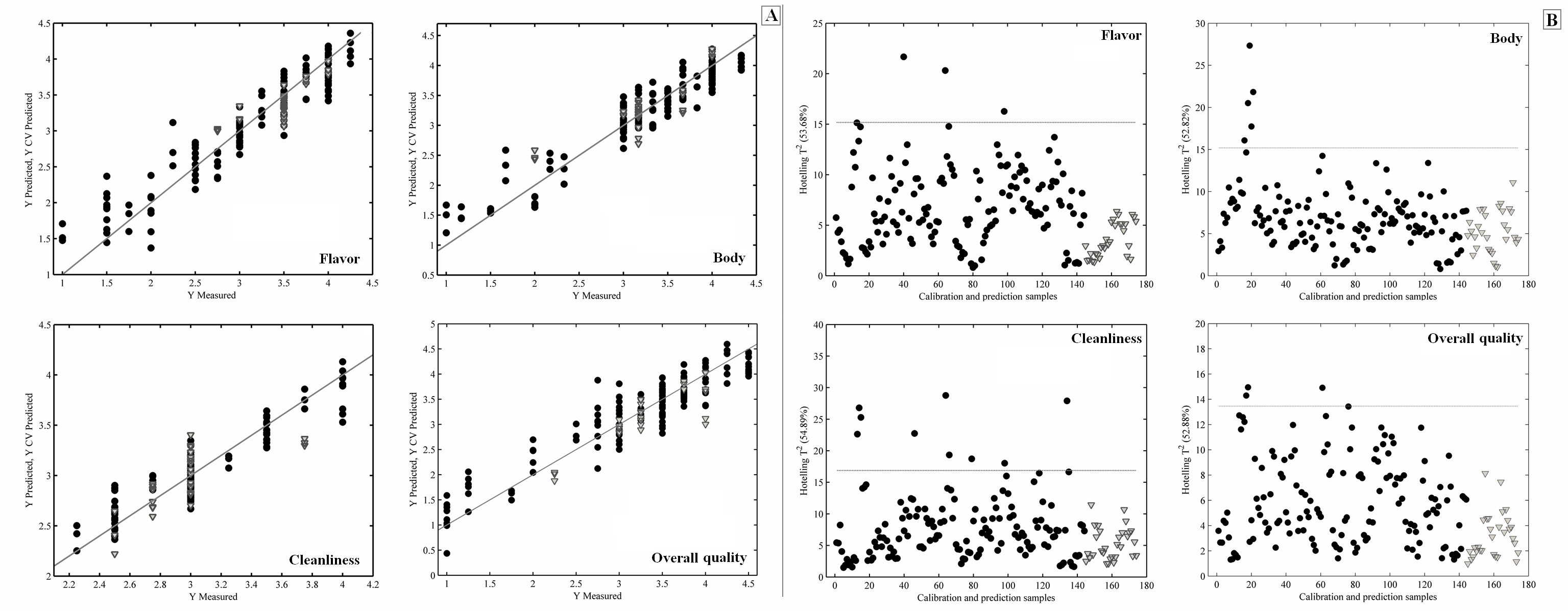
Ribeiro J. S., Salva T. J. G., Tomaziello R. A., Augusto F., Ferreira M. M. C., "PREDICTION OF SENSORY PROFILES OF BRAZILIAN ARABICA COFFEE USING AROMA COMPOSITION, GAS CHROMATOGRAPHY AND PARTIAL LEAST SQUARES REGRESSION MODELS". Campinas, SP, Brazil, 14-19/09/2008: 22nd International Conference of Coffee Science, Programme & Abstracts (2008) 38. Oral C318.
|
|
RIBEIRO, Juliano S.*, SALVA, Terezinha J. G**, TOMAZIELLO, Roberto A.**, AUGUSTO, F.* and FERREIRA, Márcia M. C*
*Universidade Estadual de Campinas, SP, Brazil, **Instituto Agronômico de Campinas, SP, Brazil.
The establishment of
mechanisms that allow the evaluation, assurance and quality
certification of food products is an
indispensable strategy for
maintaining commercial competitiveness. Sensory profiling is still the
most widespread technique
employed to
evaluate the final quality of coffee. The correlation between
flavour and sensory profiles using multivariate
analysis becomes an excellent
tool in the quality control of foods and agricultural
products, being applied successfully in
analyses of hazelnut, vinegar,
juices and wine.
In this work,
the volatile compounds of fifty-eight Brazilian arabica roasted
coffee samples were analyzed by solid phase
microextraction and
gas chromatography (SPME-GC) and the data were
used to correlate with sensory evaluation by
experts. The sensory attributes
investigated were body, flavour, cleanliness and overall quality. Regression
models (partial
least squares) [1] based
on correlation of chromatographic profiles with each sensory attribute
were developed (Figure 1A).
The ordered predictor selection
(OPS) method was used for variable selection [2].
Figure 1 – Predictions (A)
and Hotelling T2 (B) of calibration (circles) and prediction samples (triangles).
For the calculation of the
prediction errors, Hotelling T2 statistics
had been used [3]. The results provided by the regression
models are promising and
prove the feasibility of using a similar methodology in routine applications
to predict the sensory profiles of unknown Arabica coffee samples.
[1] Ferreira, M. M. C., Antunes, A. M., Melgo, M. S., Quim. Nova, 22, 724-731 (1999);
[2] Teófilo, R. F., Martins, J. P., Ferreira, M. M. C., register 0000270703255138: Brazil (2007);
[3] Hotelling, H., J. Educ.
Psychol., 24, 417-441 (1933);
38